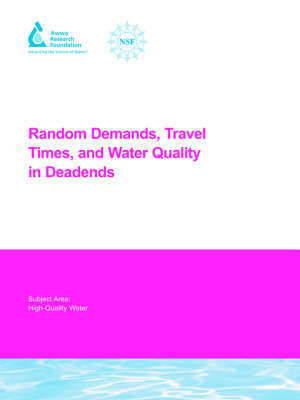Water Research Foundation Report
1 total work
Random Demands, Travel Times, and Water Quality in Deadends
by S. Buchberger, J. Carter, Y. Lee, and T. Schade
Published 1 January 2004
This study establishes a long-term record of water use and water quality in a residential neighborhood served by a dead-end pipe. Using this record of water demands and quality, specific objectives of this project were to: characterize statistical properties and daily patterns of water demands; test the hypothesis that residential water use is a Poisson pulse process; derive travel times for water delivered to consumers on the dead-end line; check for significant correlations between water quality and travel times; determine if surrogate quality parameters are indicators of system integrity; evaluate the usefulness of real-time monitoring of network water quality. Applying concepts pioneered by 20th century communication utilities (dealing with demands on telephone exchanges), a novel Poisson Rectangular Pulse (PRP) model trades phones for faucets to provide a rigorous, robust framework for describing residential water demands. The PRP model provides a sound mechanistic description of residential water use based on the intensity, duration, and frequency of demands at individual fixtures. Utilities can use the PRP demand model to: estimate peak demands in branching pipes; discern the presence of leaks in measured pipe flows; perform Monte Carlo simulations of residential water demands to aid probabilistic vulnerability assessments of pipe networks; assess the impact of proposed conservation measures on system-wide demand; and to evaluate the effect of code changes on water use habits.
